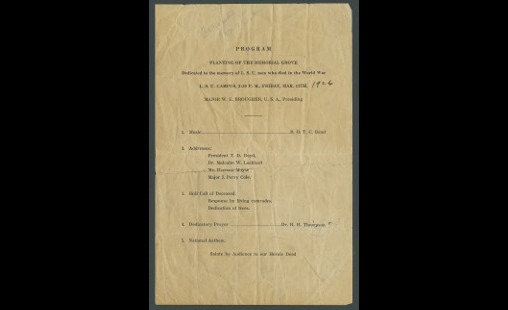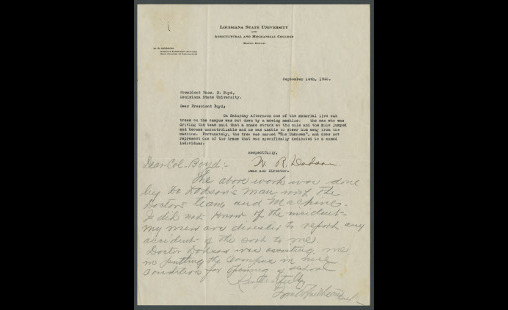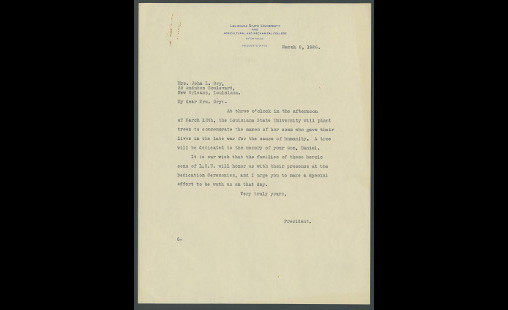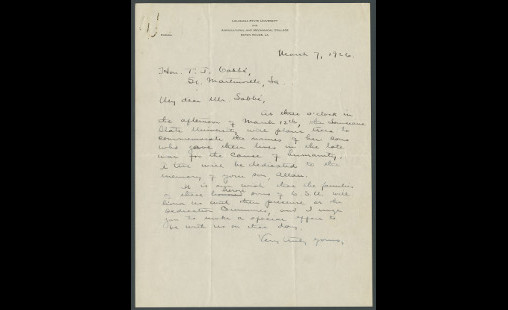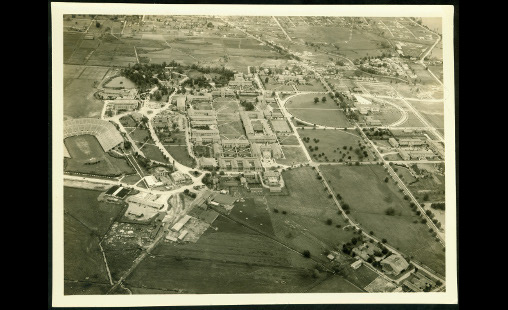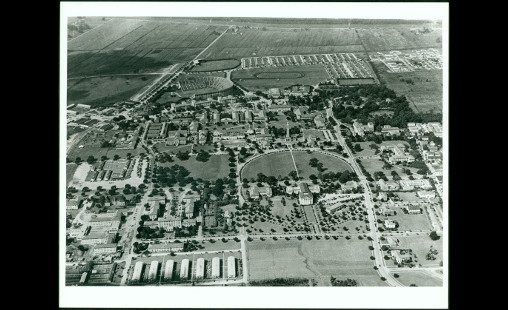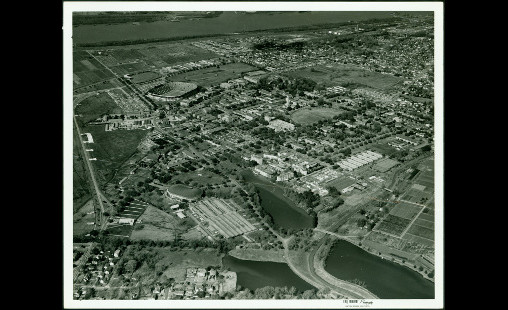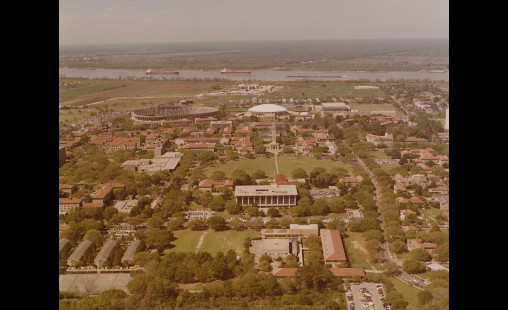History
Explore records from LSU Libraries Special Collections that tell the story of the LSU Memorial Oak Grove.
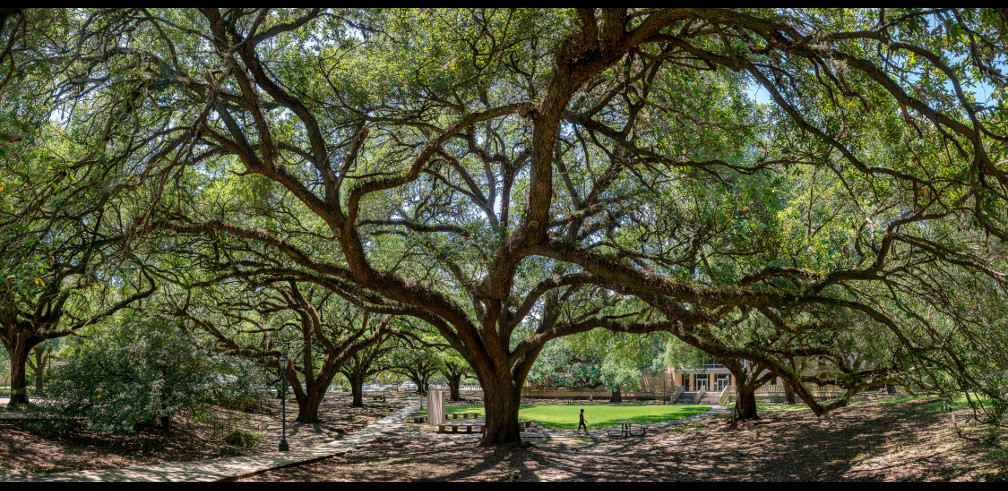
After World War I, universities nationwide became interested in memorializing the sacrifices made by college men and many institutions, among them Harvard, Yale, Princeton, and others, made an effort to recognize their students in some way. Borne out of this desire to honor LSU students and alumni who were killed in the war, the Memorial Oak Grove was dedicated on March 12, 1926. Of the 1,128 LSU men who served, thirty were killed. Thirty-one live oak trees were planted; one for each of the fallen plus one for the Unknown Soldier laid to rest in Arlington National Cemetery. A memorial for all Louisianans killed in the war was proposed in 1920. This became the Memorial Tower that was dedicated along with the rest of the campus on April 30, 1926.
In the ensuing years, the Memorial Oak Grove has grown to become a part of the campus landscape but its original purpose has been diminished. In 1941, bronze plaques containing the names of the fallen were placed at each tree and the oak grove became known as “smooch alley,” ostensibly a good place for students to make out. By the early 1960s, walkways and benches were built in the grove, along with a concrete marker containing a bronze plaque that was to carry the names of those killed in the Cold War. Throughout the 1960s, Free Speech Alley was first held here as were anti-Vietnam War demonstrations, concerts, and flea markets. Since the 1970s, the Memorial Oak Grove has become a quiet shady place to have lunch, study, or relax, but very few know of its role in campus history or that it is a place of remembrance.
